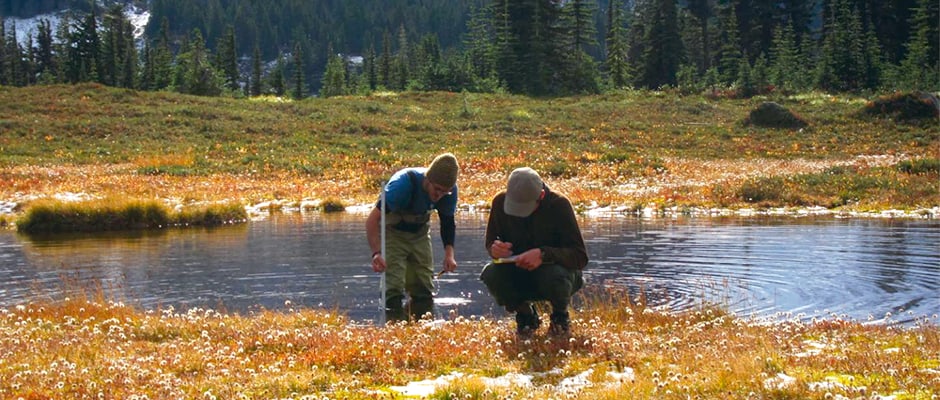Share this article
Climate Change May Impact Northwest Mountain Amphibians
Warmer winters and the changing nature of precipitation may have negative effects on amphibians that live in the mountainous wetlands of the Pacific Northwest, according to new research.
“What we found out was that we will have more drying of wetlands in the future,” said Se-Yeun Lee, a research scientist at the University of Washington’s Climate Impacts Group and lead author of a recent study published in PLOS ONE. Warmer temperatures will lead to more evaporation and less of the shallow pond water that many amphibian species need to survive, she said. It also means some high elevation areas receive more rain and less snow, which is bad because replacing the snow means water stays around in the wetlands for less time than it does when snow melts slowly over a period of time.
She and some of her coauthors found that while many researchers had assumed that wetlands will be hard hit by climate change, there weren’t many studies done on how the mountainous wetlands of the Pacific Northwest will be affecting. They combed the sparse published literature then set out to test monitor how different kinds of ponds changed over the seasons.
Coauthor Maureen Ryan, a senior scientist at Conservation Science Partners, a nonprofit organization, said that longer dry periods can affect the life cycles of many amphibians in the area. Species like the long-toed salamander (Ambystoma macrodactylum) and the northwestern salamander (Ambystoma gracile) live in high elevation wetlands and usually need several years to grow. The length of the wet season can determine whether they develop successfully.
The northwestern salamander in particular is interesting because, Ryan said, “It can environmentally decide whether to become a terrestrial adult or to become a sexually mature adult in the aquatic form.”
But longer dry periods could mean more of the salamanders choose to become terrestrial, which could affect the population dynamic of the species.
Other species like the cascades frog (Rana cascadae)— currently a candidate for listing under the federal Endangered Species Act — and the western toad (Anaxyrus boreas) morph to adulthood in one season, but longer dry periods could affect their overall success as well.
Ryan said that the study they conducted helps develop baseline information about how mountain wetlands in Washington state work — information that could be used to focus conservation efforts in the future.
“This study was great because it collected a lot of good field data over time that we didn’t have,” added Meghan Halabisky, another coauthor and a PhD student at the University of Washington.
Ryan said that these tools can help them pinpoint areas most in need of conservation efforts, and the other researchers said that the model could be expanded to other ecosystems and regions.
Header Image: To develop the model, the team collected data for 121 wetland sites in Olympic National Park, Mount Rainier National Park and North Cascades National Park. Researchers monitored each site several times during the summer and fall of 2012.
Image Credit: Maureen Ryan/University of Washington








